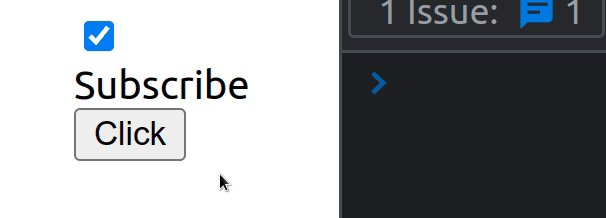Set the default checked value of a Checkbox in React
Last updated: Apr 7, 2024
Reading time·3 min

# Set the default checked value of a Checkbox in React
Use the defaultChecked prop to set the default checked value of a checkbox
in React, e.g. defaultChecked={true}.
Input elements with type set to checkbox support the defaultChecked prop
for setting a default value.
import {useState} from 'react'; export default function App() { // 👇️ Initialize checked state to true const [isSubscribed, setIsSubscribed] = useState(true); const handleChange = () => { setIsSubscribed(current => !current); }; return ( <div> <label htmlFor="subscribe"> <input type="checkbox" defaultChecked={true} value={isSubscribed} onChange={handleChange} id="subscribe" name="subscribe" /> Subscribe </label> </div> ); }

We passed true for the
initial state value of the
useState hook and set its
defaultChecked prop to true to mark it as checked by default.
const [isSubscribed, setIsSubscribed] = useState(true);
When passing a boolean prop that is set to true, you can only pass the prop's
name, e.g. defaultChecked and defaultChecked={true} achieve the same result.
<input type="checkbox" defaultChecked={true} value={isSubscribed} onChange={handleChange} id="subscribe" name="subscribe" />
Input elements with type set to checkbox or radio support the
defaultChecked prop, whereas select and textarea elements support the
defaultValue prop.
setIsSubscribed because the function is guaranteed to be called with the current (most up-to-date) value for the isSubscribed boolean.const handleChange = () => { setIsSubscribed(current => !current); };
This is useful when we need to calculate the next state based on the current state.
I've also written an article on how to check if a checkbox is checked.
# Set the default checked value of an uncontrolled Checkbox in React
If you need to set an uncontrolled checkbox to be checked by default, set its
defaultChecked prop to true.
import {useRef} from 'react'; export default function App() { const ref = useRef(null); const handleClick = () => { // 👇️ Get the checkbox value with a ref console.log(ref.current.checked); }; return ( <div> <label htmlFor="subscribe"> <input ref={ref} defaultChecked={true} type="checkbox" id="subscribe" name="subscribe" /> Subscribe </label> <br /> <button onClick={handleClick}>Click</button> </div> ); }

The useRef() hook can be passed an initial value as an argument.
const ref = useRef(null);
The hook returns a mutable ref object whose .current property is initialized
to the passed argument.
current property on the ref object to get access to the checkbox element on which we set the ref prop.const handleClick = () => { // 👇️ Get the checkbox value with a ref console.log(ref.current.checked); };
When we pass a ref prop to an element, e.g. <input ref={myRef} />, React sets
the .current property of the ref object to the corresponding DOM node.
Every time you click on the button, the checked value of the checkbox will be logged to the console.
useRef hook creates a plain JavaScript object but gives you the same ref object on every render. In other words, it's pretty much a memoized object value with a .current property.You can access any attribute on the checkbox element via ref.current. If you
log the current property on the ref object, it's simply a reference to the
input element.
If you need to set the default checked value of a radio button, click on the link and follow the instructions.

